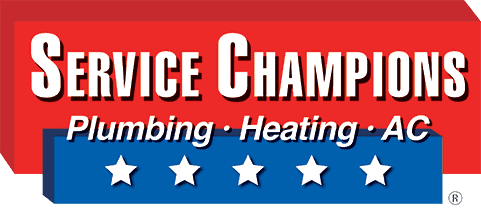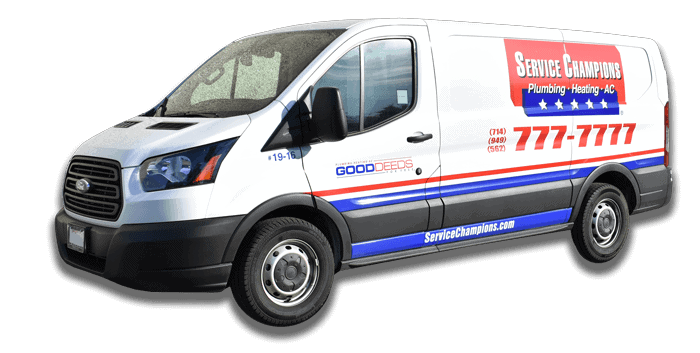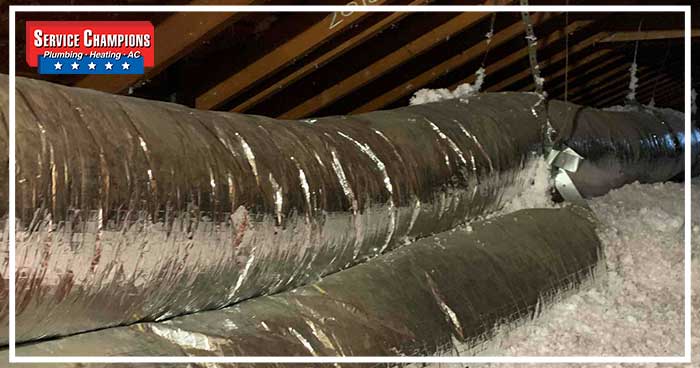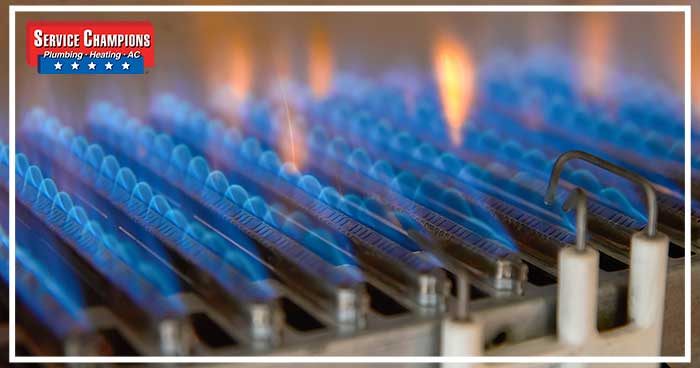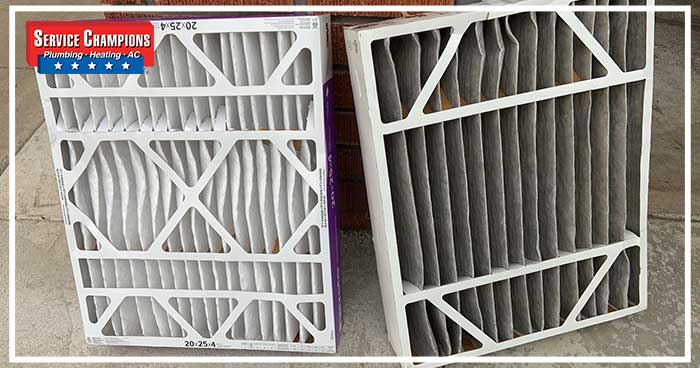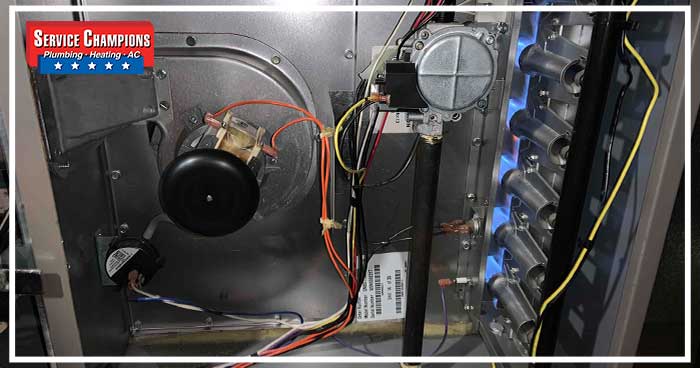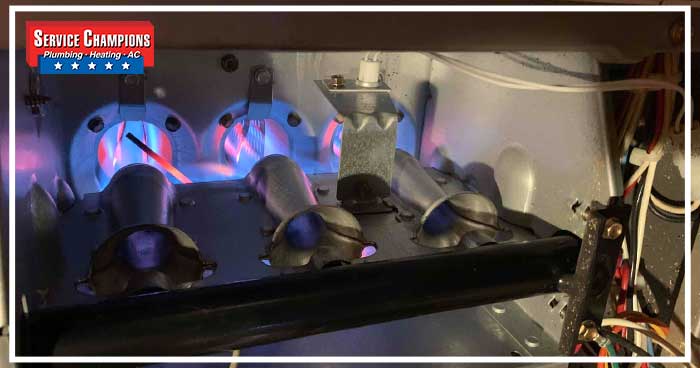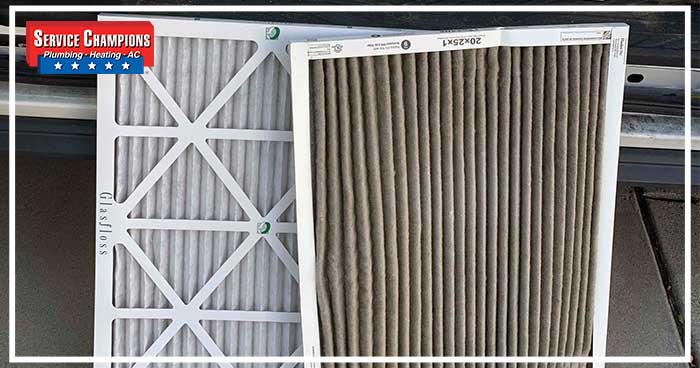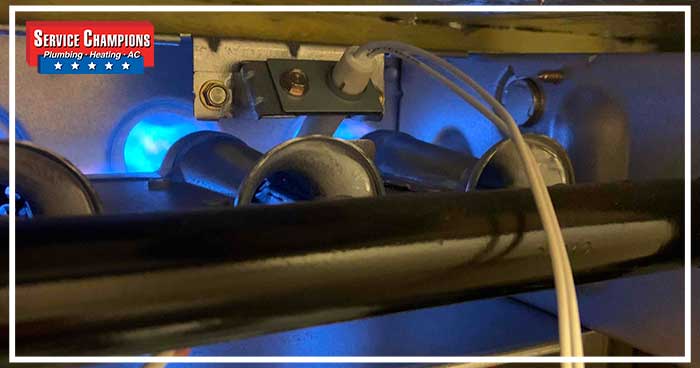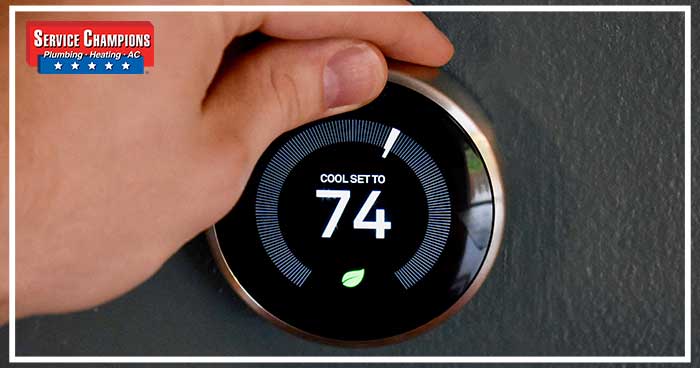Why is My Heater Not Working? Tips for The Most Common Furnace Problems
We’re really starting to feel the chill of winter here in Southern California. At Service Champions, we acknowledge how lucky we are to live in an area that sees mild winters. Despite this, the cold still hits, and on those brisk days nothing feels better than coming home and turning on the heat.
Imagine your surprise though when your furnace suddenly starts acting strange. Maybe it’s a loud noise, strange smell, or cold air coming through the vents. This time of year, the question we hear most is, “why is my heater not working.” Because of this, we’re sharing our favorite tips and tricks for common furnace problems.
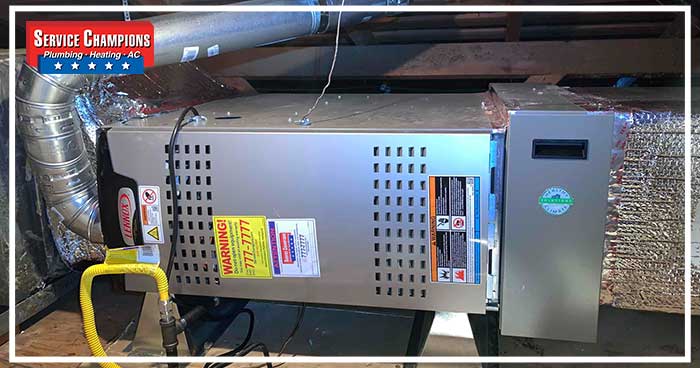
Forgetting Routine Maintenance
Hands down, the best way to care for your home furnace is to schedule routine maintenance. We recommend two HVAC tune-ups per year, one before spring and one before winter.
Every technician at Service Champions understands that your furnace needs specific care to keep it running as efficiently as possible. That’s why we’ve put together 18-points in our furnace tune-up, click here to see everything we do to ensure the health of your HVAC system. During a tune-up, your technician will inspect and professionally clean every part of your system. They will also let you know if there are any small problems that need to be fixed.
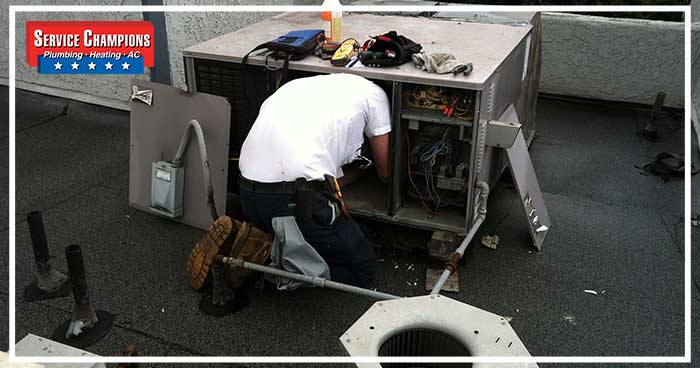
Why is My Furnace Blowing Cold Air?
There’s almost nothing worse than coming home, expecting a warm house, and feeling nothing but cool air coming from your vents. If this scenario sounds familiar, you’re not alone and there could be several factors at play.
When it comes to your heat not working, sometimes the simplest solution is the easiest. This time, we’re talking about the thermostat. Thermostat problems are fairly easy to diagnose. Simply make sure the thermostat is set to heat, then raise or lower the temperature by a few degrees. If your home temperature adjusts with the thermostat, the problem is with your furnace. Another thing you can do is change the batteries and restart the thermostat. Sometimes a simple restart is all it needs.

If adjusting and resetting the thermostat doesn’t resolve the issue, there are a few other things to check. The most common reasons why your heater blows cold air are:
- Leaking Ductwork – Treated air is carried through your home by a set of ducts. Your ductwork lives in the attic, basement, and even in your walls. Over time, cracks and holes can develop in the metal tubing. These existing holes and cracks can expand and allow cool air to mingle with warm air, causing your heater to blow cold air.

- Pilot Light Won’t Turn On – While most newer home heaters do not have pilot lights, anything older will. For older furnaces, the pilot light is a crucial part of the entire system. This little flame makes sure the natural gas that’s pumped into your system ignites. Sometimes the pilot light goes out and all it takes is a simple relight. You should call a professional if you can’t relight the pilot light on your own. If you can’t light the pilot light and can’t tell if gas is flowing or not, it’s time to call the pros. A certified HVAC technician can diagnose the issue since working with gas can be very dangerous.

- The Air Filter is Dirty – Perhaps the most important maintenance tip we can give you is to routinely check and change your air filter. The filter can get clogged with dirt and debris and block treated air from coming through Meaning some air will still come through the vents, but it won’t be warm.

- Not Enough Fuel – All heaters rely on fuel to run properly. The vast majority of Americans have a natural gas furnace in their home. This natural gas line powers almost all appliances, including your stove, furnace, and clothing dryer. One of the best ways to check the functionality of your fuel line is to light your stove. Since the same fuel that powers your furnace also powers the stove, you can test both by just checking one. If your stove fails to light, you know it’s a problem with the gas supply itself.**Image of furnace**

Why Won’t my Furnace Turn-Off?
When it comes to HVAC troubles, a heater not turning off presents a whole new set of problems. It could be one of two things: Either your thermostat is broken (or some wiring is off), or the furnace blower is not working properly.
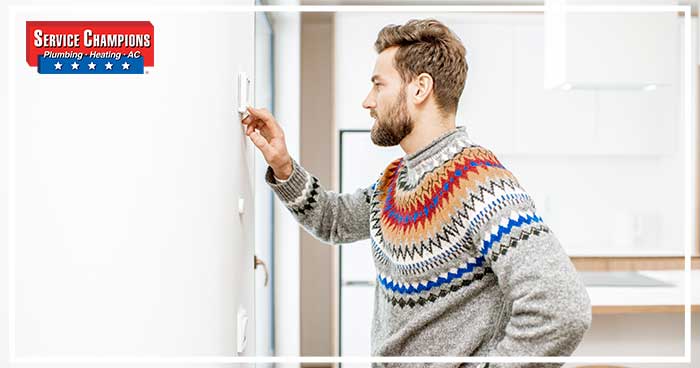
The thermostat is truly the remote control of your entire HVAC system. Therefore, the first thing you should check is the thermostat. Start by checking the settings, make sure the thermostat is set to “auto” instead of just “on.” By setting it to auto, this will allow your system to cycle on and off.
If you’ve checked the settings and everything seems correct, it very well could be an electrical problem. To check this, pull your thermostat off the wall carefully and make sure all the wires are securely connected. Next, restart the system. Sometimes this is what the thermostat needs to start working again.
After you’ve tweaked the settings and wiring on the thermostat and it still does nothing, the next step should be to call an HVAC professional. We say call a professional because the problem could lie in the blower motor. The blower motor is what pushes treated air through your home. Your AC also uses the blower motor, so it is an essential part of any HVAC system. Since there is electrical involved, this is something that needs to be handled by a pro.
Only Certain Parts of My Home Have Heat
Have you ever walked from your nice, warm living room into a very cold bathroom or bedroom? It’s not pleasant. If you are experiencing cold spots in your home, it could be attributed to a dirty air filter or problematic ductwork.
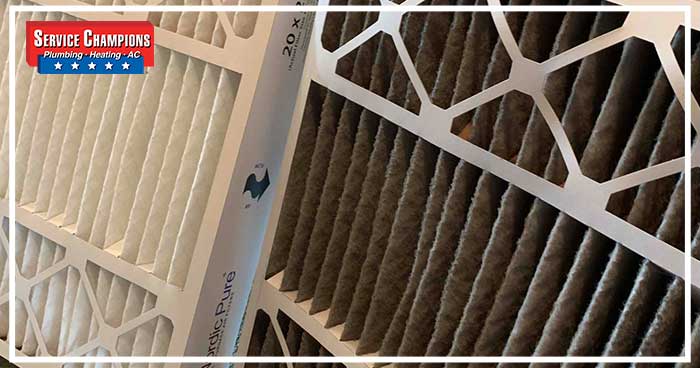
We mentioned this earlier, but the best thing you can do for your HVAC system is to routinely change your air filter. If you let your air filter accumulate too much debris, it can lead to a lot of buildup that stops treated air from making it into your home.
If your air filter has been recently changed or checked, the next place to look should be the ductwork. Leaking ductwork can cause treated air to escape before it gets to a specific room or area of the house.
Why is My Furnace Short Cycling?
Furnaces run in cycles. This allows the furnace to fully heat your home, then give itself a break before starting up again. It’s normal for a furane to cycle about 2 3 times every hour. If your furnace is starting and stopping more than that, it’s probably short cycling.
There are several reasons your furnace may be short cycling. While some are easy to fix on your own, others require professional assistance.
- Overheating – Even a furnace can get too hot. If this were to happen, the appliance will turn itself off. This is a safety measure to prevent damage to the system and motor. After the furnace cools, it will start up again, which leads to short cycling.

- Dirty Air Filter – An air filter has two jobs. The first is to keep indoor air contaminates from getting in your home, and the second is to keep dust and debris out of your HVAC system. Your furnace can short cycle if an air filter is too full and can’t catch the dust and debris that pollute the inner-workings of your furnace.

- Bad Flame Sensor – All furnaces come equipped with safety features. One of the more important ones is the flame sensor. This part makes sure gas only flows into the furnace when a flame is present. If the flame sensor cannot detect a flame, it will stop all gas flow. Over time, this part can get dirty with dust, dirt, and other debris. If it gets too dirty, it won’t detect a flame and automatically shut off any gas flow to your system. Which will cause short cycling.

- Your Thermostat is in the Wrong Spot – The placement of your thermostat can determine how long your furnace stays on. If you find your furnace short cycling, make sure the thermostat is in a good area of the home. You don’t want it to be just above or below a return vent. It’s also bad to put it too close to the warm kitchen or in direct sunlight. If the thermostat thinks your home is properly heated, it will tell the furnace to turn off, which could explain short cycling.

- Your Furnace is Too Big – When it comes to HVAC, size matters. If your furnace is too big or too small, it will short cycle. The larger furnaces will shut off before they complete their cycle, and the smaller furnaces will constantly cycle because they can’t effectively heat the whole home. This frequent short cycling puts unnecessary pressure on the compressor and could lead to early system failure.
Need Heater Help? Service Champions is Here to Help
If your heat is not working, there’s no one better to call than Service Champions Plumbing, Heating, & AC. We are the only Diamond Certified plumbing and HVAC company serving Southern California. If you are in Los Angeles, Orange, or Riverside counties, reach out today! Either call the number at the top of the screen or click here to schedule an appointment online.
